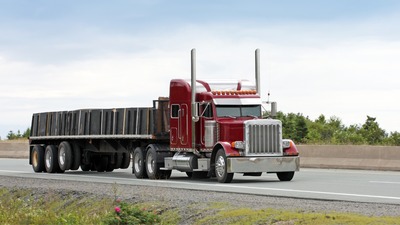Choosing the right aluminum ramps for your truck can be a game-changer for loading and unloading goods efficiently. With an array of options available, it's essential to consider what best suits your needs while ensuring safety and durability. This guide will walk you through the vital factors to consider, making your decision process as straightforward as possible.
Assessing Your Needs: Weight Capacity
When starting your journey to find the perfect aluminum ramps, the first step is assessing the weight capacity you'll require. This isn’t just about the heaviest load you plan to carry; it includes the combined weight of the cargo and the equipment used to move it. Aluminum ramps come in various weight capacities, designed to safely support everything from light yard equipment to heavy machinery. Overloading a ramp can lead to dangerous situations, so it's crucial to choose a ramp with a capacity that exceeds your maximum load. This consideration will ensure not only the safety of your operations but also the longevity of the ramps themselves.
To accurately determine the weight capacity needed, calculate the heaviest load you anticipate and then add a safety margin. Manufacturers often provide a guideline, but adding up to 25% to your heaviest load can give you a comfortable buffer. This precaution takes into account any potential increases in load weight, ensuring your aluminum ramps remain a reliable tool for your loading needs.
Understanding Ramp Types and Their Uses
Aluminum ramps come in a myriad of designs, each tailored for specific tasks ranging from stationary dock ramps to portable folding ones. The key to choosing the right type lies in understanding the nature of your loading activities. For frequent loaders, stationary ramps offer a durable solution, whereas businesses requiring flexibility might opt for lightweight, portable models. Each type of ramp serves a different purpose, with some designed for general use and others tailored for specific types of vehicles or equipment. Familiarizing yourself with these differences will help you narrow down the options to find the best match for your requirements.
The Importance of Choosing the Right Length and Width
Length and width are crucial considerations when selecting aluminum ramps. The length of the ramp determines the angle of incline your equipment will have to navigate. A general rule is, the longer the ramp, the easier and safer it is to use, especially for heavy equipment. This is because a gentle incline reduces the risk of accidents and makes the loading process smoother. When it comes to width, ensure the ramp is wide enough to comfortably accommodate your equipment or vehicle. Adequate width not only enhances safety by providing more room for maneuvering but also contributes to the ramp’s versatility for various types of loads.
Portability and Storage: Finding the Right Balance
For many, the ideal aluminum ramp is one that strikes a perfect balance between portability and storage. This necessitates a focus on ramps that are lightweight enough to be easily moved, yet compact enough to not take up excessive space when not in use. Foldable or detachable ramps offer a practical solution, as they can be broken down to save space. Additionally, consider the ease of setting up the ramp. Time is a valuable commodity, and a ramp that's quick to deploy can significantly streamline your operations. Look for ramps that feature innovative design elements to enhance portable convenience without compromising on strength or safety.
Safety Features to Consider
Safety should always be a top priority when selecting aluminum ramps. Look for ramps equipped with safety features such as anti-slip surfaces, guardrails, and secure connection points. These features are not just about adhering to safety regulations; they're about ensuring peace of mind for you and your team. A ramp with a high-traction surface can significantly reduce accidents caused by slipping, making it a crucial feature for operations in all types of weather. Guardrails provide an added layer of security, particularly for higher lifts, by preventing accidental falls. Finally, a secure connection to your truck or loading dock guarantees that the ramp will stay in place, further minimizing the risk of accidents.
Maintenance Tips for Aluminum Ramps
Maintaining your aluminum ramps ensures they remain safe to use and extend their lifespan. Regular cleaning to remove debris and corrosive materials is crucial, especially if your ramp is used outdoors. Inspection is another key aspect; check for any signs of wear or damage, such as cracks or bending, which could compromise the ramp's structural integrity. Promptly addressing these issues can prevent them from developing into bigger problems. Lubricating moving parts, if your ramp has any, will keep it functioning smoothly. While aluminum ramps are renowned for their durability, periodic maintenance can help you get the maximum value from your investment.
Finding Your Perfect Aluminum Ramp
Selecting the ideal aluminum ramp for your truck doesn't have to be a daunting task. By considering the weight capacity, the type of load, length and width, portability and storage, and safety features, you can make a well-informed decision that caters to your specific needs. Investing in the right ramp will not only enhance your loading operations but also contribute to the longevity of your equipment. Remember, the best choice is one that combines functionality with safety, ensuring you get the most out of your purchase.





